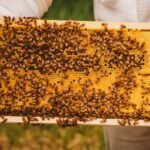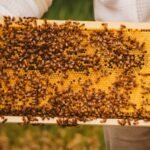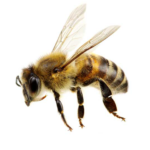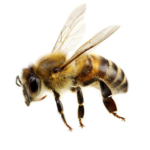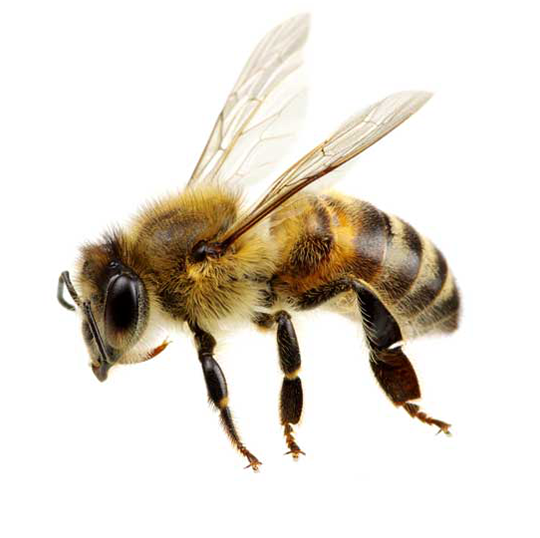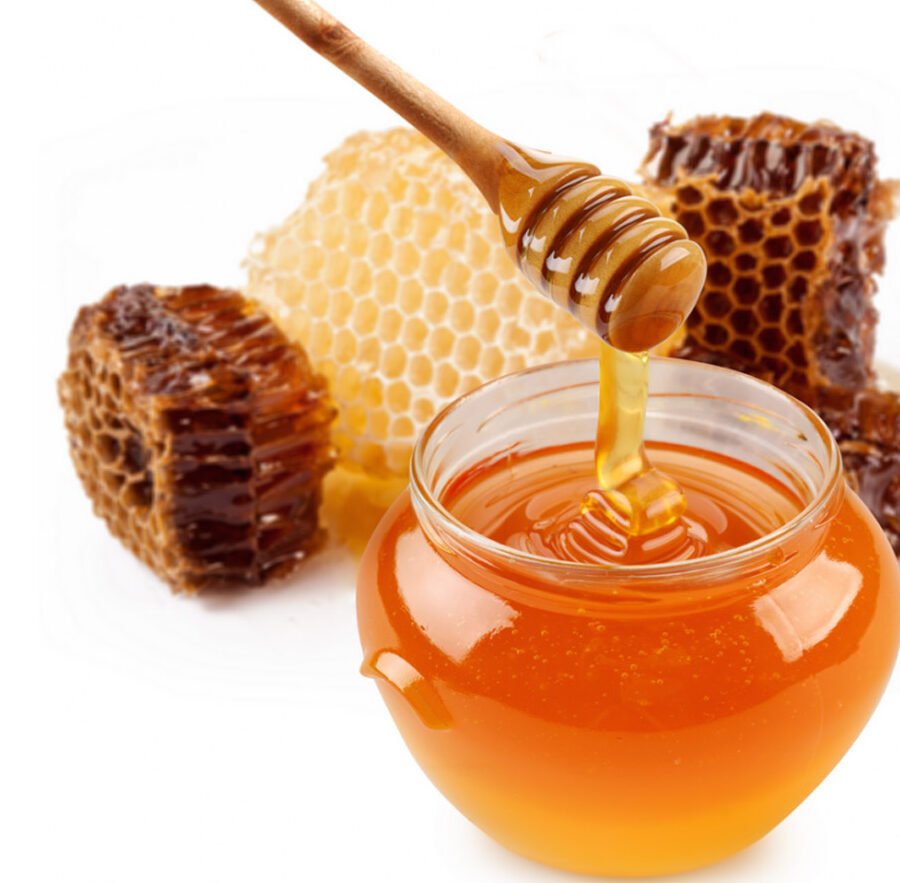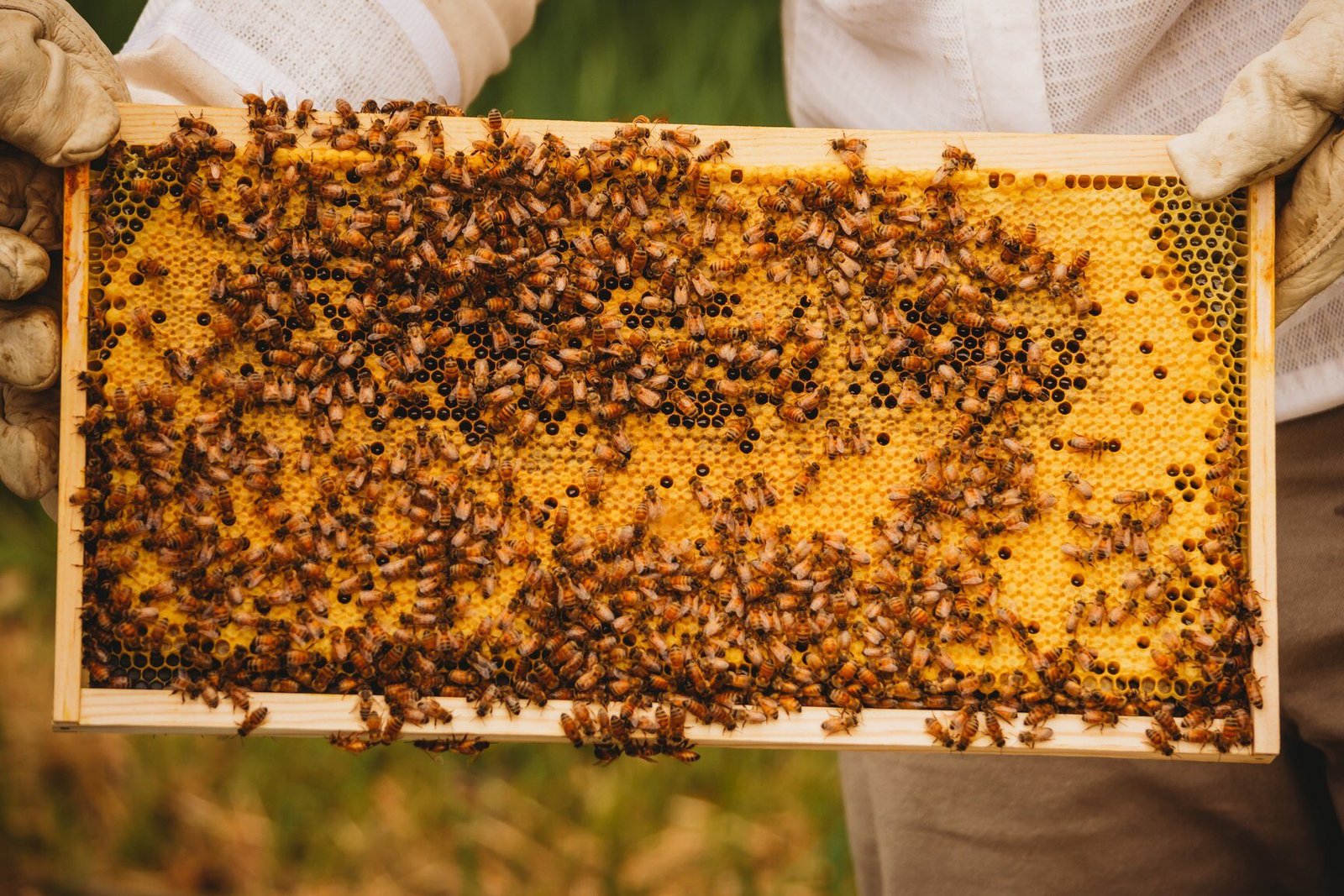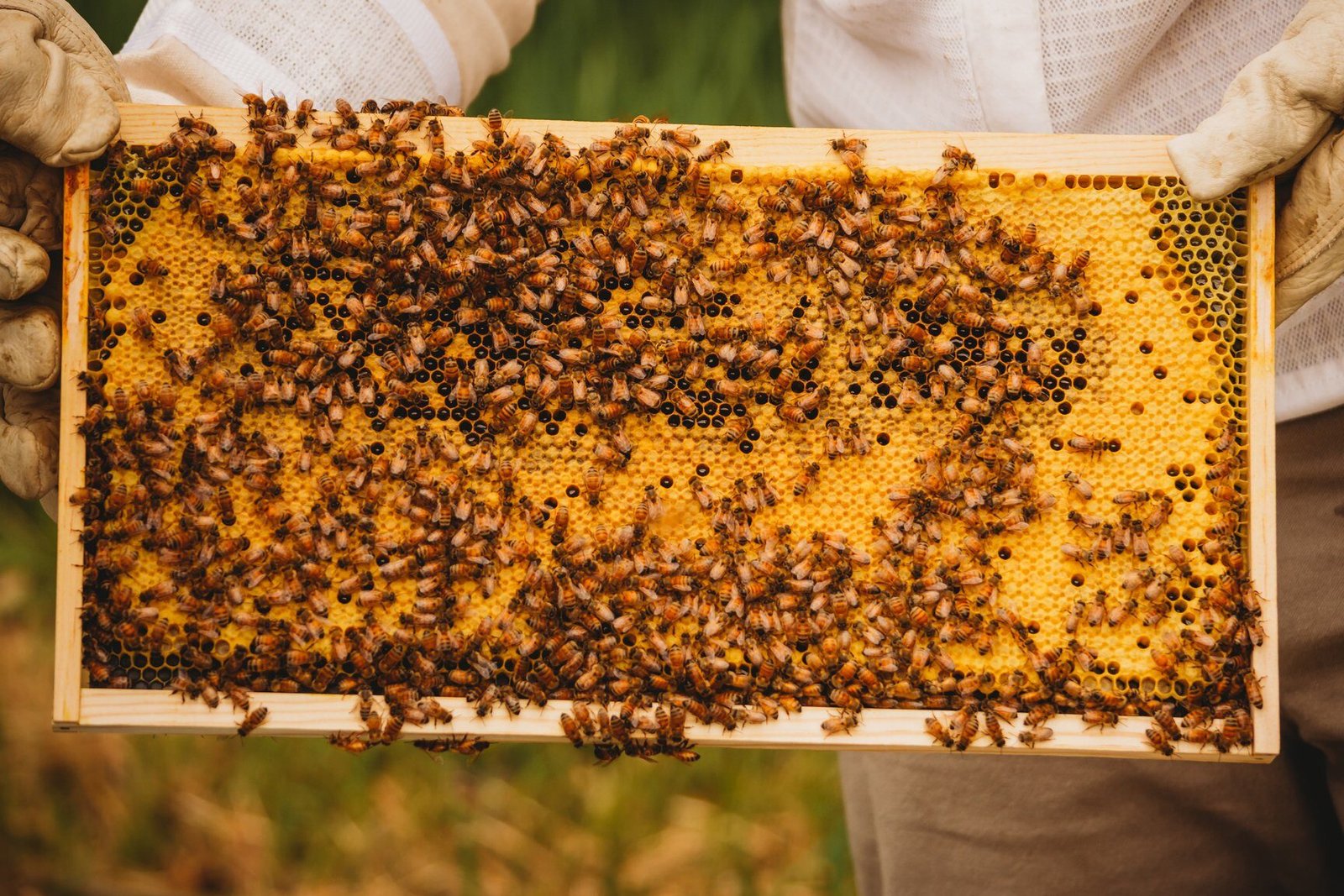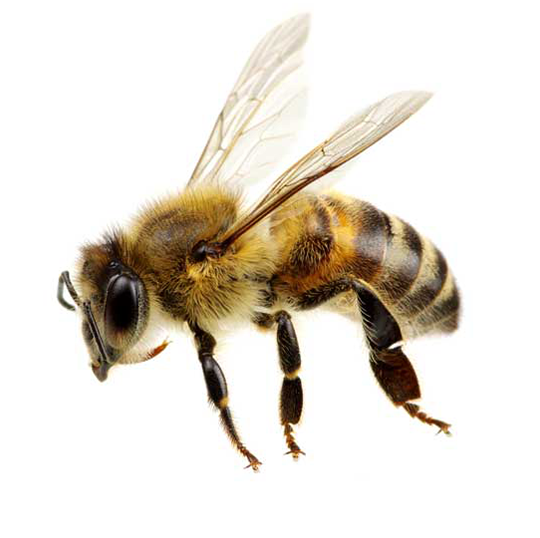Bees, those tiny buzzing creatures that seem so insignificant, actually play a vital role in our ecosystem. They tirelessly pollinate flowers and crops, ensuring the growth of our food sources and contributing to the overall biodiversity. However, these incredible insects face numerous threats that put their very existence at risk. From habitat loss to pesticides and parasites, bees are being hit hard. In this article, we will explore the biggest threats faced by bees and uncover the alarming consequences that the loss of these remarkable creatures could have on our planet.

Pesticides
Insecticides
Insecticides are commonly used substances that are specifically designed to kill insects. While they are effective in controlling pests that harm crops, they can also have detrimental effects on bees. When bees come into contact with insecticides, either through direct exposure or from contaminated pollen and nectar, it can severely impact their health. The chemicals in insecticides can disrupt the bees’ nervous systems, impair their ability to forage, navigate, and communicate, and even cause death. It is crucial to adopt alternative pest control measures that minimize the use of insecticides and prioritize the protection of bee populations.
Herbicides
Herbicides are used to control and eliminate weeds in agricultural fields and landscapes. However, the reliance on herbicides has had unintended consequences for bees. The destruction of weeds, which are essential food sources for bees, reduces the availability of nectar and pollen. Bees depend on these resources for their nutrition and overall well-being. Moreover, herbicides can also contaminate water sources, affecting not only bees but also other pollinators and wildlife. It is vital to adopt sustainable farming practices that prioritize the coexistence of bees and other beneficial insects with weed control measures.
Fungicides
Fungicides are substances used to eliminate and prevent the growth of fungal pathogens on plants. Although they primarily target fungi, some fungicides are toxic to bees as well. When bees come into contact with fungicide residues on plants or through contaminated floral resources, it can harm their health and the ecosystems they contribute to. The effects of fungicides on bees vary depending on the specific chemical and its concentration. However, research suggests that exposure to fungicides can weaken bees’ immune systems, making them more susceptible to diseases and other threats. It is crucial to carefully assess the risks and benefits of fungicide use and implement measures to mitigate their impact on bee populations.
Loss of Habitat
Destruction of natural habitats
The destruction of natural habitats, such as forests, meadows, and wetlands, is one of the major threats faced by bees. As human activities continue to expand, these natural habitats are being cleared to make way for agriculture, urbanization, and infrastructure development. This loss of habitat directly affects bees by depriving them of suitable nesting sites, foraging areas, and a diverse range of flowers and plants that they rely on for food. Without sufficient habitat, bee populations decline, leading to a disruption in pollination services and a potential decline in plant biodiversity.
Conversion of natural lands to agriculture
The conversion of natural lands to agricultural areas has had a significant impact on bee populations. Agricultural practices often involve the cultivation of a single crop, known as monoculture. This practice restricts the availability of diverse nectar and pollen sources for bees, as they heavily rely on a variety of floral resources for their nutrition. Furthermore, the use of chemical pesticides and herbicides in agriculture can further exacerbate the negative impact on bees. Protecting and restoring natural lands, promoting sustainable farming practices, and implementing agroecological approaches are crucial steps in mitigating the loss of habitats for bees.
Urbanization and infrastructure development
The relentless urbanization and infrastructure development associated with population growth have encroached upon natural habitats and further fragmented landscapes. Urban areas often lack the diverse floral resources necessary to support healthy bee populations. The increase in concrete structures and manicured lawns leaves little room for wildflowers and native plants that bees rely on for nutrition. It is essential for urban planners and city dwellers to prioritize creating bee-friendly urban environments, including the establishment of green spaces, community gardens, and the cultivation of bee-friendly plants to support urban bee populations.
Climate Change
Shift in flowering patterns
Climate change has disrupted the timing and patterns of plant flowering, which has had significant consequences for bees. As temperatures rise and weather patterns shift, plants may flower earlier or later than usual, making it challenging for bees to synchronize their foraging activities with the availability of nectar and pollen. This desynchronization can lead to a mismatch between bees and their floral resources, potentially reducing their access to crucial nutrition. The disturbance in the delicate balance of plant-pollinator interactions can have cascading effects on ecosystem dynamics.
Extreme weather events
Climate change is also contributing to an increase in extreme weather events, such as hurricanes, droughts, and heatwaves. These events can have devastating effects on bee populations. Extreme weather can destroy bee habitats, disrupt foraging activities, and reduce the availability of floral resources. Additionally, extreme heat can directly impact bee health, as bees struggle to regulate their body temperature. These events can lead to declines in bee populations and further threaten their survival.
Increased susceptibility to diseases
Climate change can also influence the prevalence and spread of diseases and parasites that affect bees. As temperatures and rainfall patterns change, it can create more favorable conditions for the proliferation of pathogens, such as viruses and fungi. Bees already face several diseases and parasites, including the Varroa mites, Nosema ceranae, and Israeli acute paralysis virus (IAPV). Climate change can exacerbate the impact of these threats, weakening bee immune systems and making them more susceptible to infections. Mitigating climate change through measures to reduce greenhouse gas emissions and implementing adaptive strategies will be crucial in protecting bees and their vital role in ecosystems.

Diseases and Parasites
Varroa mites
Varroa mites are one of the most significant threats to honeybees. These parasitic mites feed on the bodily fluids of bees, weakening their immune systems and transmitting viruses. The mites reproduce rapidly, infesting entire colonies and causing significant damage. If left untreated, Varroa mite infestations can lead to colony collapse and the death of bee populations. Effective pest management strategies, including integrated pest management approaches, regular monitoring, and treatment against mites, are critical to mitigating their impact on bees.
Nosema ceranae
Nosema ceranae is a microsporidian parasite that infects honeybees’ digestive systems. It can impair bees’ ability to process food, leading to weakened immune systems, reduced lifespan, and increased mortality rates. This parasite is widespread and highly contagious, making it challenging to control. Maintaining healthy, diverse habitats and reducing stressors on bee populations can help decrease the susceptibility to Nosema ceranae infections.
Israeli acute paralysis virus (IAPV)
IAPV is a pathogenic virus that affects honeybees, causing paralysis and eventual death. Bees infected with IAPV experience tremors, loss of motor control, and a shortened lifespan. The spread of IAPV can be facilitated by several factors, including the movement of infected bees and the presence of Varroa mites, which can serve as vectors for the virus. Efforts to control Varroa mites and prevent their spread can indirectly contribute to reducing the transmission of IAPV.
Lack of Nutritional Resources
Decreased availability of diverse nectar and pollen sources
The availability of diverse nectar and pollen sources is essential for the overall health and vitality of bee populations. However, factors such as habitat loss, monoculture practices in agriculture, and the destruction of wildflowers have significantly reduced the availability of these resources. Bees require a varied diet to meet their nutritional needs, as different plant species provide different vitamins, minerals, and proteins. The lack of diverse nutritional resources can impact bees’ immune systems, reproductive success, and overall resilience to other stressors. Conserving and restoring diverse habitats, promoting organic farming practices, and planting bee-friendly gardens can help address this shortage.
Monoculture practices in agriculture
Monoculture, the practice of growing a single crop over vast areas, has become increasingly prevalent in modern agriculture. While it allows for efficient large-scale production, it has adverse effects on bees and other pollinators. Monoculture limits the availability of diverse floral resources, as vast stretches of land are dedicated to a single crop that may only bloom for a short period. Bees that rely on a variety of flowers throughout the year are unable to find enough food in monoculture fields, leading to nutritional deficiencies and increased vulnerability to diseases and parasites. Promoting crop rotation, integrating flowering cover crops, and providing hedgerows can enhance food availability and support healthy bee populations.
Reduced biodiversity
The loss of biodiversity due to habitat destruction and fragmentation is a significant threat to bees. Bees depend on a variety of plant species for their survival, and the loss of plant diversity directly impacts their access to nectar and pollen. When bees have limited options for forage, it can contribute to nutritional deficiencies and compromise their overall health and immune systems. Conserving and restoring habitats that support a diverse range of plant species is crucial for maintaining healthy bee populations and the stability of ecosystems.
Genetic Factors
Inbreeding
Inbreeding refers to the mating of closely related individuals within a population. It can have adverse effects on bee populations, including reduced genetic diversity, increased susceptibility to diseases, and decreased fitness. Inbreeding depression can lead to weakened immune systems and reduced survival rates among bees. Promoting genetic diversity through the introduction of new genetic material and creating connected habitats that allow for natural gene flow are important strategies to mitigate the effects of inbreeding.
Loss of genetic diversity
The loss of genetic diversity in bee populations has implications for their ability to adapt to changing environmental conditions and resist diseases and parasites. Genetic diversity provides a broader range of traits and variation, increasing the chances of survival in the face of environmental challenges. Habitat conservation, promoting diverse landscapes, and avoiding the use of pesticides and practices that harm bees are essential in protecting and maintaining genetic diversity among bee populations.
Weakened immune systems
A consequence of genetic factors and various threats faced by bees is a weakened immune system. Bees with compromised immune systems are more susceptible to diseases, parasites, and other stressors. They may be less able to fight off infections, leading to higher mortality rates within colonies. It is crucial to prioritize the preservation of healthy environments, reduce exposure to pesticides and other toxic substances, and mitigate the other threats discussed in this article to support bees’ immune systems and overall vitality.
Commercial Beekeeping Practices
Frequent transportation of bees
Commercial beekeeping involves the transportation of beehives across long distances to provide pollination services to various agricultural crops. While this practice is essential for crop production, it can have negative effects on bees. Long-distance transportation can disrupt the bees’ natural foraging routines, stress them, and increase the risk of disease transmission. Minimizing transportation distances, providing suitable rest periods for bees, and implementing best management practices that prioritize bee welfare can help reduce the negative impacts of frequent transportation.
High stocking densities
In commercial beekeeping operations, high densities of beehives are often maintained in a single location to maximize honey production and pollination services. However, high stocking densities can lead to increased competition for resources, including nectar and pollen, among the bees. This competition can result in nutritional deficiencies, weakened immune systems, and increased stress levels. Optimal stocking densities and hive management practices that prioritize the well-being of bees are essential to mitigate the negative impacts of high stocking densities.
Supplemental feeding with artificial substitutes
To compensate for the limited availability of natural forage and to maintain high honey production levels, commercial beekeepers often supplement bees’ diets with artificial substitutes. While these supplements provide calories, they may lack the essential nutrients and diversity present in natural nectar and pollen. Relying heavily on artificial substitutes can lead to nutritional imbalances and compromise the health and longevity of bees. It is important to promote sustainable foraging practices and prioritize the conservation of diverse habitats to reduce the reliance on artificial feeding.
Electric Power Lines
Electromagnetic fields interfering with bee navigation
Electric power lines and associated electromagnetic fields (EMFs) have been found to interfere with bee navigation. Bees rely on the Earth’s magnetic field for navigation, and EMFs can disrupt their ability to orient themselves and find their way back to the hive. This interference can result in bees getting lost or disoriented, making it difficult for them to forage effectively and return to the colony. Careful placement and management of power lines, as well as minimizing exposure to EMFs, can help mitigate this potential threat to bees.
Attraction to electrical equipment
Bees have been observed to exhibit an attraction to electrical equipment, including transformers, power boxes, and communication towers. This behavior is thought to result from the electrical signals produced by such equipment, which bees may mistake for floral resources. While this attraction may seem harmless, it can lead to bees getting trapped or injured in electrical equipment, increasing mortality rates. Taking preventive measures such as covering or rearranging electrical equipment to reduce the chances of bee attraction can help safeguard bee populations.
Cellular Network Radiation
Potential impact on bee behavior and navigation
Cellular network radiation, emitted by mobile phones and communication towers, has raised concerns about its potential impact on bees. Research studies have suggested that exposure to radiation from cellular networks can affect bee behavior, including foraging patterns, navigation abilities, and communication within colonies. While the exact mechanisms and long-term effects are still being studied, precautionary measures such as minimizing unnecessary radiation exposure and avoiding the placement of communication towers near bee habitats can help reduce potential harm to bees.
Possible effects on honeybee communication
Honeybees rely on complex communication systems, such as the waggle dance, to convey crucial information about food sources and hive locations within their colonies. Cellular network radiation has been hypothesized to interfere with honeybee communication, potentially disrupting their ability to coordinate foraging activities and negatively affecting the overall productivity of colonies. Continued research and monitoring are necessary to better understand the potential impacts of cellular network radiation on honeybee communication and take appropriate measures to protect bee populations.
Lack of Public Awareness and Action
Limited understanding of the importance of bees
One of the significant challenges in protecting bees is the general lack of public awareness and understanding of their importance. Bees and other pollinators play a vital role in pollinating plants, which in turn contributes to food security, biodiversity, and the health of ecosystems. However, many people remain unaware of the specific benefits provided by bees and the threats they face. Promoting education and awareness campaigns that highlight the importance of bees, their role in ecosystems, and the actions individuals can take to protect them is crucial for shifting public attitudes and behaviors.
Failure to implement bee-friendly practices
Despite growing awareness, there is often a gap between knowledge and action when it comes to implementing bee-friendly practices. Many individuals and businesses continue to use pesticides and herbicides without considering the impact on bee populations. Furthermore, the conversion of natural lands to agriculture and the lack of habitat conservation efforts persist. Encouraging and incentivizing the adoption of bee-friendly practices, such as minimizing pesticide use, providing diverse forage resources, and creating bee-friendly habitats, is essential in safeguarding bees’ well-being.
Lack of support for conservation efforts
The conservation of bees and their habitats requires collective action, support, and resources. Unfortunately, the lack of support for conservation efforts hinders progress in protecting bees. Conservation initiatives, research programs, and policy development often face challenges in securing funding, public support, and political will. Recognizing the critical role of bees in ecosystems and the need for their conservation, individuals, communities, governments, and organizations must come together to prioritize and support bee conservation efforts through funding, legislation, and collaborative partnerships.
In conclusion, bees face a multitude of threats that jeopardize their survival and the critical ecosystem services they provide. From pesticide use to habitat loss and climate change, each threat poses unique challenges and requires targeted solutions. Protecting bee populations will involve a combination of sustainable farming practices, habitat conservation, reduced reliance on pesticides, awareness-raising, and collaborative efforts across sectors. By understanding and mitigating these threats, we can ensure the continued survival of bees and the preservation of biodiversity and ecosystem health for future generations.

